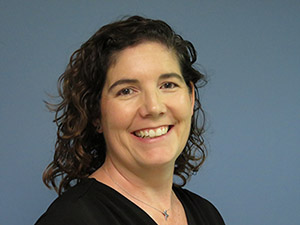VCU Professor and Va-LEND Faculty Member Selected to Collaborate on International Team on CP
August 1, 2016

|
This past June, Stacey Dusing, Ph.D, PT, PCS, Associate Professor in the Department of Physical Therapy and Va-LEND faculty member at Virginia Commonwealth University was among three distinguished individuals from the United States invited to participate in a workshop to develop an International Early Intervention Research Collaborative. The workshop was held just prior to the 2016 International Conference in Stockholm on Cerebral Palsy (CP). "I presented some research on a clinical trial at the American Academy of Developmental Medicine and Child Neurology in Sept 2015 and at that conference the workshop organizers approached me about attending the workshop in Stockholm Sweden," said Dusing. The purpose of the workshop was to co-design an international early intervention study with a shared data set that would allow collaborative research. This clinical research would enhance our understanding of early natural history of disability in infancy and allow for comparative effectiveness research on the efficacy of different early interventions, all while still respecting different cultural and health system differences. "The overarching aim of the workshop was to design projects to accelerate early intervention research, overcome sample size problems, overcome the complexities of RCTs (Randomized Controlled Trial) in infants and reduce research duplication".
Dusing said the workshop yielded an international group of recommendations on outcome assessments that could be feasibly collected by clinical sites around the world that see infants who are at high risk of CP. Once protocols are completed international groups will seek funding to start the natural history study. This will lead to comparative effectiveness trials in the future.
Her excitement was clear as Dusing shared what this event has meant to her. "First it was a huge honor to be invited to work with the world leaders in early detection of CP and intervention for children with developmental disabilities. Second, the meeting was a great opportunity to brainstorm with international experts on how to speed up the identification of cerebral palsy in order to increase services. In the US CP is diagnosed very late, close to 2 years of age. But newer assessment tools including the Prechtl's General Movement Assessment (GMAs) combined with term age brain MRI can predict 95% of children who will have CP as young as 3 months of age. Utilization of the GMAs has been slow in the US. Hearing how other countries and rehab experts are working to make changes or were able to implement these tools in clinical practice has helped me think about my own practice. Knowing some of the conversation would center around the use of the GMAs, I went straight from Sweden to Pisa Italy to complete my certification in the GMAs. Two other VCUHS physical therapists have completed their certification in the GMAs since I returned and one more will train in September so that our team is ready to fully participate in the Natural History and Comparative effectiveness trials ahead. We are starting to use the GMAs in clinical practice at the Children's Hospital of Richmond (CHoR) at VCU in the Neonatal Intensive Care Clinic and the Neonatal Continuing Care Program. This is done to increase the likelihood of early detection and provision of interdisciplinary developmental services to infants at high risk of having CP. "We look forward to the ongoing opportunities to collaborate with an incredible team of international researchers and the impact it could have on improving clinical care, early diagnosis and treatment to support infants and families.
"Since becoming a PT 19 years ago the most exciting discovery for children with CP is the large impact activity has on shaping the brain through neuroplasticity, especially in infancy. This means we, therapists in collaboration with parent, have the potential to "change the brain" of infants with CP who are diagnosed early enough to have specific high intensity interventions. This potential opens incredible doors, but we need to know which interventions are the most effective, for which infants, at what time, and what dose. The Early Intervention Research Collaborative sets the stage to allow us to start answering these questions."







